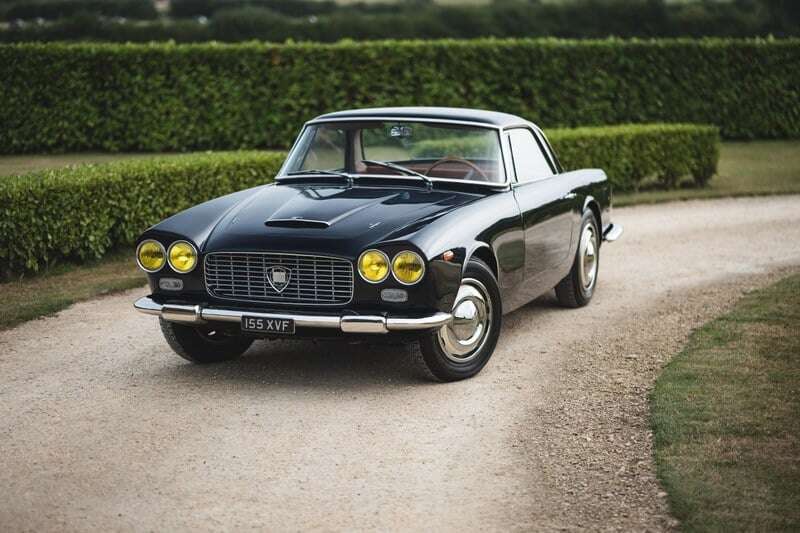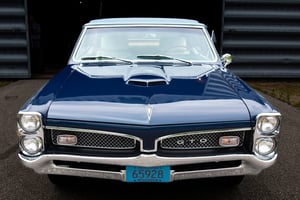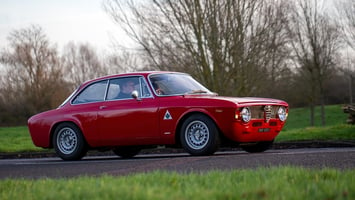When it comes to classic American muscle cars, few names command as much respect as the Pontiac...
Without a shadow of a doubt, the Lancia Flaminia GT3C holds a revered place in the lineup of truly classic Italian cars. With its elegant styling and innovative engineering, this car continues to be a firm favourite of classic car collectors all over the world. Let’s have a look at its history, and what makes it so special…

A brief history of the Lancia Flaminia
Conceived as an idea under a beach umbrella, and subsequently introduced in 1957, the Lancia Flaminia was named after the ancient Roman road Via Flaminia, connecting Rome to the Adriatic coast. It served as Lancia’s flagship model, succeeding the Aurelia and epitomising the brand’s commitment to luxury, sophistication and cutting-edge engineering. Indeed, the Flaminia was chosen by the Italian President Gronchi to be the transport for Queen Elizabeth II during her state visit to Italy in the 1960s, with four Flaminia 335 limousines commissioned and provided for her use.
The Flaminia itself was available in several body styles, including saloon, coupe and convertible. The GT versions, particularly the Flaminia GT3C, stand out for their refined blend of performance and style. Designed by Carrozzeria Touring, the GT3C - short for ‘Gran Turismo 3C’, with ‘3C’ indicating its triple carburettor setup - debuted in 1961.
The car featured Touring’s patented ‘Superleggera’ construction technique, combining a lightweight aluminium body with a tubular steel frame. This innovation not only enhanced performance but also contributed to its distinctive, timeless design.
The Lancia Flaminia was in production from 1957 to 1970. The GT3C version - featuring the triple-carburettor setup - was introduced in 1961 and remained available until the end of the production run in 1967. This specific variant represented the pinnacle of performance within the Flaminia GT lineup.

Engineering excellence
At the heart of the Flaminia GT3C lay a 2.5L V6 engine. This engine was a refined version of the world’s first production V6, originally introduced in the Aurelia.
The triple Weber carburettors in the GT3C boosted power output to 140–150 bhp, allowing for a top speed of around 118–125 mph. This level of performance, combined with independent front suspension and a rear De Dion axle, ensured exceptional handling and ride comfort for its time.
While primarily designed as a luxury grand tourer, the Flaminia GT3C occasionally participated in motorsport events, including the gruelling Mille Miglia and Targa Florio.
Elegance personified…
The GT3C’s styling is a masterclass in understated elegance. The long bonnet, flowing lines and minimal chrome accents created a balanced and sophisticated profile. The interior, true to Lancia’s reputation, featured luxurious materials, meticulous craftsmanship and a relatively spacious layout.
Despite being a grand tourer, the GT3C was relatively compact and lightweight, making it well-suited to the winding roads of Europe. Its restrained yet distinctive design has earned it comparisons to its contemporaries, such as the Aston Martin DB4 and the Maserati 3500 GT.
Each GT3C was built by hand, resulting in minor variations between individual cars. This artisan approach, while costly, underlined Lancia’s commitment to quality and exclusivity.
It's thought around 1700 examples of the Flaminia GT were produced. Of these, just a fraction were equipped with the triple carburettor setup, making the GT3C highly sought after.
With its rich history, exquisite design and rarity, the Lancia Flaminia GT3C continues to inspire admiration and devotion among the classic car world - and it’s very clear to see why! Just look at that interior! And those wheels look pretty special, too…

Photo credits: 1962 Lancia Flaminia GT3C carandclassic.com







